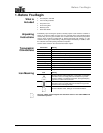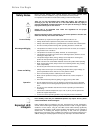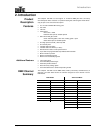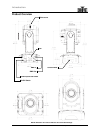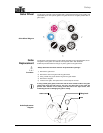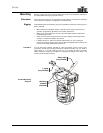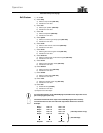
Setup
-6- Q-Spot™ 160-LED User Manual Rev. 01b
DMX Linking
You may link any Q-Spot™ 160-LED fixture to a DMX controller using a standard DMX
serial connection. If using other DMX compatible fixtures with a Q-Spot™ 160-LED
fixture, it is possible to control them individually with a single DMX controller.
If you are not familiar with the DMX standard, or if you need information about the DMX
cables needed to link the Q-Spot™ 160-LED fixture to a DMX controller, you may
download the “DMX Primer” document from the CHAUVET® Web site.
DMX Modes
The Q-Spot™ 160-LED uses the standard DMX data connection for its **DMX mode(s),
<list of modes>**. You will find information about these DMX modes in the Introduction
chapter (brief description), the Operation Instructions chapter (configuration details), and
the DMX Values section (individual channel values).
Master/Slave
Connectivity
The Master/Slave mode allows a Q-Spot™ 160-LED fixture to control one or more Q-
Spot™ 160-LED fixtures without a DMX controller. The controlling fixture becomes the
“master” when running an Auto program (AUTO 1 or 2), a sound activated program
(SOUND 1 or 2), or the custom program (CUSTOM). The controlled fixtures are the
“slaves” and you must set them to “Slave” mode from their respective control panels.
During the Master/Slave operation, the slave fixtures will operate in unison with the
master fixture.
The master and slave fixtures link to each other using the standard DMX serial
connection. If you are not familiar with the Master/Slave connectivity, you may download
the “DMX Primer” document from the CHAUVET® Web site.
DO NOT connect a DMX controller to the fixtures operating in Master/Slave mode.
Otherwise, the signals from the DMX controller may interfere with the signals from
the master unit.
The Operation chapter of this manual provides detailed instructions on how to
configure the Master and Slave units.
Color Wheel
The Q-Spot™ 160-LED comes equipped with a Color wheel featuring nine colors and a
white (open).
Color Wheel Diagram






